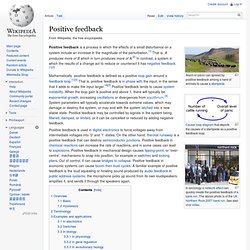

Motivation & Emotion: Positive Reinforcement Archives. One reason I found this article very interesting is because I believe that each of us, including myself, do not often think about the effect that our diet has on our emotions and mood. The researchers in this study came to the conclusion that "Food really does have a lot of power. " By properly maintaining a well-balanced diet we can significantly improve our mood. This article analyzes several different foods and provides the possible effects each one can have on a person's health.
An important point here is that mood can affect your eating choices, and what you have eaten can subsequently affect your mood. In some ways, this can be a cyclical process. This is a very important topic today, and I think each of us should take time to consider this study. As I mentioned in my last article, the prevalence of fast food should be of great concern to us, and I say this for a few reasons. There are a few psychological concepts at play here. Fast Food is known to be a "mood downer. " Milk. Cognitive Behavior Treatment Plans for Major Depression. Cognitive Behavioral Therapy (CBT) Techniques. The cognitive behavioral therapy is used in the treatment of various disorders related to mood, personality, anxiety, substance abuse, etc. The 'Aaron Beck Cognitive Behavior Therapy' is one such therapeutic approach that deals with most of the problems listed above. What is Cognitive Behavioral Therapy?
It is a therapy which takes a psycho-therapeutic approach to solving problems associated with behavior, dysfunctional emotions and cognition. In the cognitive behavioral therapy, a systematic and goal-oriented process is followed. The basic idea around which CBT techniques revolve is that no external factors but inherent ones are responsible for the behavior we exhibit and feelings we experience; in short, our thoughts guide our behavioral patterns. List of Cognitive Behavioral Therapy Techniques. How to Change Your Mood & Boost Your Energy. Faculty.chicagobooth.edu/ayelet.fishbach/research/FEF Compass 2010.pdf.
How to Lift Your Mood? Try Smiling. My personal trainer sometimes gives me an odd piece of advice during workouts: "Relax your face.

" For a long time, I found this advice confusing. Isn't physical exertion supposed to be expressed in grimaces? I thought of the face as a pressure-relief valve that helps emit the pain the body is experiencing. But the trainer suggested I think about it the other way around — that controlling the face can help control the mind. A Feel-Good Theory: A Smile Affects Mood. PUTTING on a sad face or a smile directly produces the feelings that the expressions represent, according to a new theory of how emotions are produced. This view elaborates on ideas proposed more than a century ago by Charles Darwin and William James, the philosopher and psychologist.
It holds that facial expressions are not just the visible sign of an emotion, but actually contribute to the feeling itself. The theory does not propose that facial expressions are more important than thoughts or memories in prompting emotions. But it points to the physiology of facial expression as a cause of emotions in its own right. The theory has been gaining gradual support over the last decade among psychologists. In one, researchers found that simply inducing people to place the muscles of their face in the pattern of a given emotional expression elicited that feeling.
To be sure, no one suggests that putting on a happy face can cheer up someone who is in mourning. Dr. Positive feedback. Alarm or panic can spread by positive feedback among a herd of animals to cause a stampede.

Positive feedback is a process in which the effects of a small disturbance on a system include an increase in the magnitude of the perturbation.[1] That is, A produces more of B which in turn produces more of A.[2] In contrast, a system in which the results of a change act to reduce or counteract it has negative feedback.[1][3] Overview[edit] Positive feedback enhances or amplifies an effect by it having an influence on the process which gave rise to it. Basic[edit] A basic feedback system can be represented by this block diagram. Positive Reinforcement Tutorial : Centre for Psychology : Athabasca University.
The purpose of this exercise is to teach the concept of positive reinforcement and also to provide an idea of the kind of self-instructional exercises used in many Athabasca University course packages.

Some technical notes about this lesson are available. A page of frequently asked questions about positive reinforcement is also available. In the first part of this exercise, the concept of positive reinforcement is defined and illustrated in six example/nonexample pairs. In an example/nonexample pair, an example of a concept is slightly altered to form a nonexample; this enables the student to tell the difference between examples and nonexamples that have similar content. In the second part of this exercise, students classify 14 examples and nonexamples and are given feedback about their performance.
This tutorial is intended for students at the university level, and should require from .5 to 1.5 hours to complete.